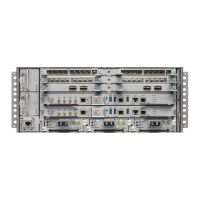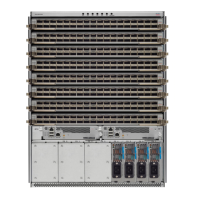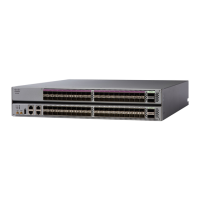Confederations
A confederation is multiple subautonomous systems grouped together. A confederation reduces the total
number of peer devices in an autonomous system. A confederation divides an autonomous system into
subautonomous systems and assigns a confederation identifier to the autonomous systems. A VPN can span
service providers running in separate autonomous systems or multiple subautonomous systems that form a
confederation.
In a confederation, each subautonomous system is fully meshed with other subautonomous systems. The
subautonomous systems communicate using an IGP, such as Open Shortest Path First (OSPF) or Intermediate
System-to-Intermediate System (IS-IS). Each subautonomous system also has an eBGP connection to the
other subautonomous systems. The confederation eBGP (CEBGP) border edge routers forward next-hop-self
addresses between the specified subautonomous systems. The next-hop-self address forces the BGP to use a
specified address as the next hop rather than letting the protocol choose the next hop.
You can configure a confederation with separate subautonomous systems two ways:
• Configure a router to forward next-hop-self addresses between only the CEBGP border edge routers
(both directions). The subautonomous systems (iBGP peers) at the subautonomous system border do not
forward the next-hop-self address. Each subautonomous system runs as a single IGP domain. However,
the CEBGP border edge router addresses are known in the IGP domains.
• Configure a router to forward next-hop-self addresses between the CEBGP border edge routers (both
directions) and within the iBGP peers at the subautonomous system border. Each subautonomous system
runs as a single IGP domain but also forwards next-hop-self addresses between the PE routers in the
domain. The CEBGP border edge router addresses are known in the IGP domains.
eBGP Connection Between Two Subautonomous Systems in a Confederation figure illustrates how two
autonomous systems exchange routes and forward packets. Subautonomous systems in a confederation use
a similar method of exchanging routes and forwarding packets.
Note
The figure below illustrates a typical MPLS VPN confederation configuration. In this configuration:
• The two CEBGP border edge routers exchange VPN-IPv4 addresses with labels between the two
autonomous systems.
• The distributing router changes the next-hop addresses and labels and uses a next-hop-self address.
• IGP-1 and IGP-2 know the addresses of CEBGP-1 and CEBGP-2.
L3VPN Configuration Guide for Cisco NCS 540 Series Routers, IOS XR Release 6.3.x
5
MPLS L3VPN Overview
Confederations

